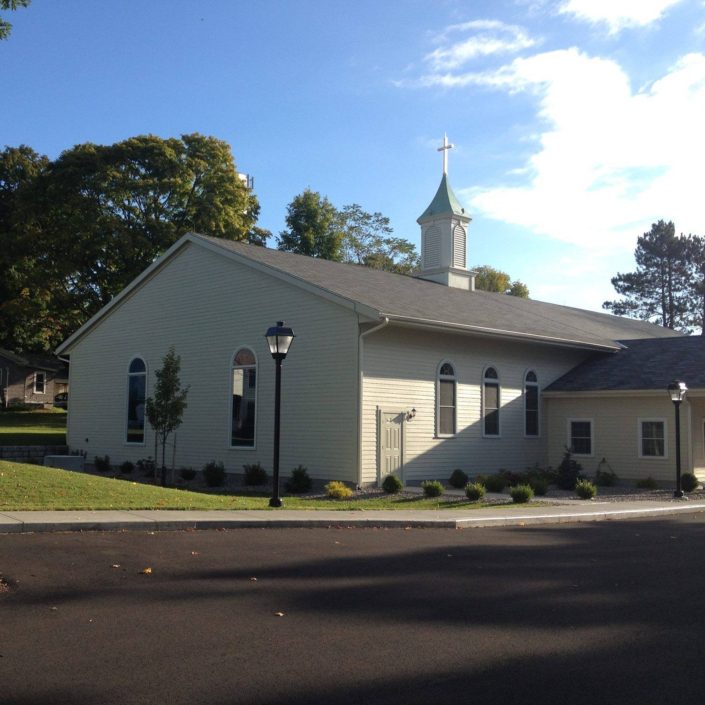
Land Where The Partridge Drums
A History of the Akwesasne Mohawk Nation
New York Disposes of Northern New York
by Darren Bonaparte
In 1791 the legislature of the State ot New York passed an act granting the Commissioners of the Land Office the powers to dispose of all unappropriated lands in New York. A Detroit fur trader named Alexander Macomb immediately made an offer of eight cents per acre for all of the land between Lake Champlain and the St. Lawrence River. This was rejected, but he eventually came away with an area of 3,840,000 acres of land in the north, minus a six mile square tract of land reserved for the Mohawks of Akwesasne and a number of islands in the St. Lawrence River. (Frisch 1971:71-72)
Although a portion of land was set aside for Akwesasne this did not mean that the Mohawks approved of this sale. New York State had no right to sell Mohawk land. Other Haudenosaunee nations were swindled out of almost all of their original territories, as were countless tribes in other states until the federal government got involved to bring a much-needed respite from this type of treachery.
In 1792 the Congress of the United States passed the Trade and Intercourse Act, which limited the New York’s power to make treaties with the Indians and put the states of Massachusetts, Virginia, Pennsylvania and Connecticut in a more competitive position to buy Haudenosaunee land. New York did not respect this law and the United States failed to enforce it, but it remained on the books (and has since become part of the argument behind Haudenosaunee land claims of modern times).
That same year, an unidentified delegation of Kahnawake and Akwesasne Mohawks journeyed to Albany to assert their claims to traditional Mohawk territory. Brushed off, they would return the next year bearing this commission:
“The Chiefs at Cak-ne-wa-ge,-head of the Seven Nations.
To our brother, Commander and Governor, Ni-haron-ta-go-wa, George Clinton, at the State of New York. Brother, this is what we agreed upon, that we should have councils and conversations together, of peace and unity.
Now brother, we beg that you will pay attention that you can take the matter into good consideration betwixt you and us, We have sent the bearers which will give you to understand our real minds and meaning, which is:
Thomas Aragrente,
Thomas Tharagwanegen
Lumen Tiatoharongiven,
William Gray,
Atthi naton.All the chiefs’ compliments to you, and beg you will not let the bearers want for victuals or drink, as much as may be for their good.
Te gan ni tasen,
Ona sa te gen,
Ona tri tsia wa ne,
On wa ni en te ni,
Sga na wa te,
Tha na ha,
Te ha sen,
Sga hen to wa ro ne
Tha ia iak ge,
Si no he se,
Tha hen teh tha,
Sa ie gi sa ge ne,
Ga ron ia ra gon.
Ga ron ia tsi go wa.”
(Signed by their marks)
Ignored a second time, Colunel Louis and three of his comrades went back again in the winter of 1793-4 and were disappointed once more. A fourth trip in December 1794 achieved its goal: the governor appointed seven commissioners to hold an interview with the deputies, but they did not have authority to enter into treaty. Once the particulars of the case had been collected, legislation was passed to authorize a settlement of their claim and to provide money for the sustenance of the delegation during their stay. This act of legislation also empowered state agents to extinguish any other claims by native groups to land within New York. A meeting at Lake George was held in September of 1795, followed by more extensive negotiations in New York City in May of 1796. Attending this round of talks were Colonel Louis Cook, Thomas Williams (identified as a chief of Kahnawake), Ohnawiio (“Good Stream,” also listed as a chief from Kahnawake), and William Gray, as interpreter.
The 1796 treaty negotations did not start off well. It appears from the accounts preserved in A History of St. Lawrence and Franklin Counties (1853) that the agents for New York questioned the authority of the deputies, since the document that they claimed bore the signatures of the full Seven Nations council could not be found-even though they insisted it had been given to George Washington for safekeeping. The state also rejected outright that the Seven Nations of Canada had any claim at all; did not the Mohawks of the Mohawk Valley lease as much as 800,000 acres of land without any consultation of their northern brethren? This last point angered the deputies.
“Brothers:
Had we several years ago, done as those have, whom you call a just people, that is; had we sold off all our lands, then; underhandedly sold our brothers, and then fled our country; took up arms and come and killed men, women, and children, indiscriminately: burnt houses and committed every other act of devastation, and in short, done everything we could, against our once nearest friends, then according to what you say of these Mohawks, you would have esteemed us a just people, and therefore would not have disputed our claim.”
Still, the deputies made it clear that they were still open to a settlement of their claim: they were more than willing to accept a yearly annuity and “a small piece we wish to reserve for our own use.” The agents responded by telling them the next day that while there was little evidence for their claim, they were willing to offer them $3,000 as an act of friendship and “to avoid all controversy in the future.” The six miles square reserved for them by Macomb, they said, was all they were willing to set aside for their use. This the delegation rejected. Their counter-proposal was for land
“to Begin at the village of St. Regis, and to run east ten miles on the line of the lattitute of forty-five, then up the River St. Lawrence, from the village of St. Regis to a place called the Presque Isle, which we think is about thirty-five or forty miles from the village, and that distance to continue twenty miles in breadth.”
The agents for the state dismissed this suggestion outright, and continued to insist that there was ample evidence that no other native groups would recognize a Seven Nations claim, either. To prove it, they produced a copy of the 1787 Livingston Lease previously mentioned, which, although declared void by the state legislature, bore the signatures of chiefs of the Six Nations. Even though the deed was admittedly void,
“It is, notwithstanding, sufficient for the purpose for which we principally mention it, as it is not to be presumed, that these Indians would ever declare that lands which they intended to sell, and be paid for, as belonging to themselves, did belong to others.”
The agents then reminded Colonel Louis that he himself was a witness to that deed, and surely would not have signed it if he knew of any other group with a claim to the land. They then stated that they were willing to offer a settlement similar to those offered to the Oneidas, Cayugas, and Onondagas out of good will only and added a yearly annuity payment to the previously offered sum.
Next week: New York Disposes of Northern New York (continued)
By Darren Bonaparte, historian and author of The Wampum Chronicles. Reprinted with permission.
Darren Bonaparte is a cultural historian from the Akwesasne First Nation. He is a frequent lecturer at schools, universities, museums, and historical sites in the United States and Canada. He has written four books, several articles, and the libretto for the McGill Chamber Orchestra’s Aboriginal Visions and Voices. Darren is a former chief of the Mohawk Council of Akwesasne. He is the creator of The Wampum Chronicles and historical advisor to film and television. He currently serves as the Director of the Tribal Historic Preservation Office of the Saint Regis Mohawk Tribe.














